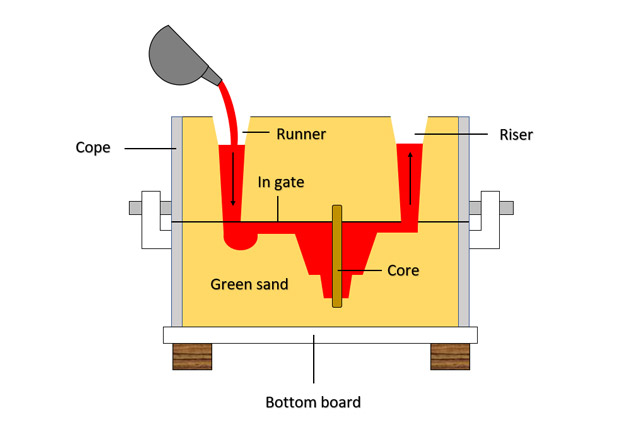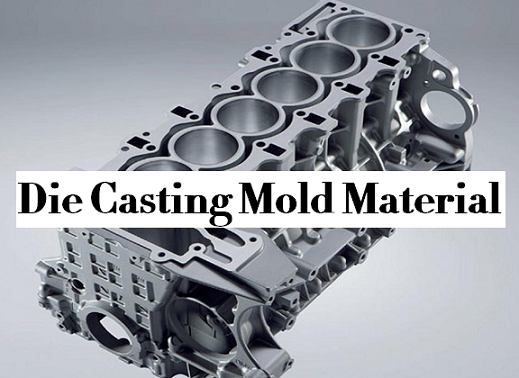The Buzz on Stahl Specialty Company
The Buzz on Stahl Specialty Company
Blog Article
10 Easy Facts About Stahl Specialty Company Explained
Table of ContentsOur Stahl Specialty Company StatementsAn Unbiased View of Stahl Specialty CompanyThe Definitive Guide for Stahl Specialty CompanyThe Definitive Guide for Stahl Specialty Company5 Easy Facts About Stahl Specialty Company Shown8 Easy Facts About Stahl Specialty Company Described

If you're creating a metal item, you have actually likely considered making use of aluminum as the base product. It has a high strength-to-weight proportion, great corrosion resistance, good formability, and visual appeal. These aspects have actually resulted in its boosted appeal over the last few years. Pure light weight aluminum has actually limited applications, so it is frequently integrated with various other elements, such as silicon, magnesium, and manganese to create alloys.
Various elements and amounts generate a wide range of desirable physical and chemical residential or commercial properties. And the Light weight aluminum Association (AA), based in The United States and copyright, has produced requirements that manage light weight aluminum alloys' structure, properties, and nomenclature. There are 2 kinds of light weight aluminum alloys wrought and cast. Factory workers create these alloy kinds in different methods, which dramatically impacts their attributes.
The Buzz on Stahl Specialty Company
Cast light weight aluminum alloys are made by melting pure aluminum and incorporating it with other steels while in liquid type. The mix is poured right into a sand, die, or financial investment mold.

160.0 represents a cast with a minimum of 99.60% light weight aluminum. The 4th number, which comes after the decimal factor, defines if the alloy is a casting (xxx. 0) or an ingot (xxx. 1). Wrought light weight aluminum alloys likewise start by incorporating molten aluminum with other metals. As opposed to cast alloys, nonetheless, they are created into their last shape through processes such as extrusion, rolling, and flexing after the steel has strengthened into billets or ingots.
There are several small distinctions in between wrought and cast aluminum alloys, such as that actors alloys can have extra significant amounts of other metals than wrought alloys. But one of the most notable distinction in between these alloys is the fabrication procedure whereby they will certainly go to supply the last item. Other than some surface therapies, cast alloys will certainly exit their mold and mildew in almost the specific strong form desired, whereas functioned alloys will go through several alterations while in their solid state.
If you think that a functioned alloy might be the most effective for your job, have a look at several of our write-ups that explain even more regarding specific functioned alloys, such as Alloy 6061 and Alloy 6063. On the various other hand, if you assume a cast alloy would certainly be much better for you, you can discover more concerning some cast alloys in our Alloy 380 and Alloy 383 short articles (coming soon).
Some Known Details About Stahl Specialty Company
When choosing a light weight aluminum foundry for your production demands, it's crucial to examine several elements. Among one of the most crucial aspects to take into consideration is the experience and competence of the factory. Foundry. Selecting a factory that has the appropriate understanding of the light weight aluminum spreading procedure, and the profile to show for it, assists to have a successful end result for your job
Having the experience and market expertise to engineer your castings for optimum production and quality end results will streamline the job. Making aluminum spreading requires a complicated set of procedures to achieve the best outcomes. When determining on a new aluminum factory to partner with, ensure they have comprehensive market experience and are well-informed about all aspects of the aluminum casting process: design, production, material analysis, and item screening.
The shop needs to likewise have a tested record of providing exceptional items that fulfill or surpass client expectations. Quality control needs to additionally go to the top of your checklist when picking a light weight aluminum factory. By collaborating with a qualified foundry that complies with the requirements for high quality control, you can protect the honesty of your product and ensure it meets your requirements.
By choosing a company that offers services that meet or exceed your item needs, you can be sure that your job will certainly be finished with the utmost accuracy and performance. Various components call for different manufacturing strategies to cast aluminum, such as sand casting or pass away casting.
The Stahl Specialty Company Diaries
Die spreading is the name provided to the procedure of creating complicated steel elements with use of molds of the element, likewise known as passes away. The procedure uses non-ferrous steels which do not have iron, such as aluminum, zinc and magnesium, as a result of the desirable residential or commercial properties of the metals such as reduced weight, greater conductivity, non-magnetic conductivity and resistance to deterioration.
Die casting manufacturing is quick, making high production degrees of components very easy. It produces even more components than any type of other process, with a high degree of accuracy and repeatability. To read more regarding die spreading and die casting materials used while doing so, continued reading. There are three sub-processes that drop under the group of die casting: gravity die spreading (or irreversible mold and mildew spreading), low-pressure die casting and high-pressure die casting.
After the purity of the alloy is examined, dies are created. To prepare the passes away for casting, it is essential that the passes away are clean, so that no deposit from previous productions continue to be.
Examine This Report about Stahl Specialty Company
The pure metal, additionally called ingot, is contributed to the heater and kept at the molten temperature level of the metal, which is then moved to the injection chamber and injected right into the die. The stress is then maintained as the steel strengthens. Once the metal solidifies, the cooling procedure starts.
(https://www.40billion.com/profile/501088413)
The thicker the wall surface of the part, the longer the cooling time due to the amount of indoor steel that additionally requires to cool down. After the element is fully cooled, the die cuts in half open and an ejection system pushes the component out. Following the ejection, the die is shut for the next injection cycle.
The flash is the added product that is cast during the process. Deburring eliminates the smaller sized pieces, called burrs, after the trimming procedure.
The Buzz on Stahl Specialty Company

Zinc is one of the most previously owned alloys for die spreading due to its lower expense of raw products. Its deterioration resistance also enables the components to be lengthy lasting, and it is one of the a lot more castable alloys due to its lower melting point.
As discussed, this alloy is one of one of the most frequently utilized, yet manufactures will, sometimes, choose light weight aluminum over zinc because of light weight aluminum's production benefits. Light weight aluminum is extremely economical and one of the more functional alloys. Light weight aluminum is used for a number of various products and sectors anything from window frameworks to aerospace materials.
Report this page